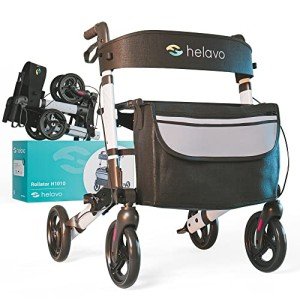Exploring the Innovations of Stable Walker Technology
In the ever-evolving world of robotics and automation, the idea of a "stable walker" has become a fascinating intersection of design, technology, and biomechanics. A stable walker refers to a robotic system efficient in maintaining balance and passing through various surfaces, imitating human-like motion. This blog site post supplies an extensive expedition of stable walkers, their components, applications, and the technological developments that continue to press the boundaries of what these makers can achieve.
What Makes a Walker "Stable"?
At its core, stability in a robotic walker is defined by its capability to remain upright and browse a series of surfaces without falling. Several aspects contribute to a walker's stability:
- Center of Gravity: A lower center of gravity normally boosts stability. Designers frequently place elements tactically to enhance this element.
- Sensing units: Advanced sensing units help the walker spot changes in the environment, allowing real-time modifications to maintain balance.
- Actuators: These parts make it possible for movement and play a crucial role in stable navigation.
- Algorithms: Sophisticated algorithms procedure sensing unit information and figure out the best motions, making it possible for adaptive walking.
Table 1: Key Components of Stable Walkers
| Part | Function |
|---|---|
| Sensors | Spot environmental conditions and help in balance |
| Actuators | Propel motion in numerous directions |
| Control Systems | Incorporate sensing unit input to make real-time balance modifications |
| Power Supply | Provide necessary energy for functions and movement |
Applications of Stable Walkers
The applications of stable walkers are vast and varied, covering numerous fields. Below are some essential locations where these innovations are making an effect:
Healthcare:
- Rehabilitation: Stable walkers can help clients recuperating from injuries or strokes by supplying support while they restore their mobility.
- Exoskeletons: Wearable robotic gadgets can aid individuals with mobility disabilities, enabling them to walk once again.
Browse and Rescue Operations:
- Unmanned stable walkers can navigate challenging terrains during search operations after natural catastrophes. They are invaluable in reaching areas that are unattainable to human beings or wheeled vehicles.
Elderly Assistance:
- Robotic walkers designed for the elderly can assist preserve independence by providing support for movement and navigation around the home.
Industrial Applications:
- In settings where heavy loads require to be carried, stable walkers can assist workers by bring products without the threat of losing balance.
Table 2: Applications of Stable Walkers
| Application Area | Usage Case Description |
|---|---|
| Health care | Rehabilitation support and exoskeletons for mobility |
| Browse & & Rescue | Browsing disaster-struck locations for recovery operations |
| Elderly Assistance | Supporting mobility for elderly individuals |
| Industrial | Bring heavy loads in complex environments |
Technological Advancements
Robotic walkers have advanced considerably over the previous couple of years due to improvements in several crucial locations:
- Sensor Technology: Enhanced sensing units such as LiDAR, ultrasonic, and cameras supply comprehensive environmental mapping, permitting walkers to make more informed decisions on the relocation.
- Artificial Intelligence (AI): AI and artificial intelligence algorithms assist in much better forecast designs for movement, making it possible for robotic walkers to gain from their experiences and improve in time.
- Battery Life: The development of lighter, more effective battery technologies makes sure that stable walkers can run longer with less regular recharging.
- Materials Science: Innovations in materials, such as lightweight composites, enhance the toughness and performance of robotic walkers.
Challenges Facing Stable Walkers
Despite the amazing advances in stable walker technology, various obstacles remain. A few of these consist of:
- Complex Environments: Navigating unforeseeable terrains is still a substantial hurdle for the majority of walkers.
- Expense and Accessibility: Many advanced robotic walkers are expensive, limiting their accessibility to a wider audience.
- User Adaptation: Training users to efficiently run or adapt to robotic walkers is crucial, especially in healthcare applications.
Regularly Asked Questions (FAQ)
1. Can stable walkers be used outdoors?Yes, many stable walkers are developed to run in numerous outdoor conditions, with features to traverse uneven surface.
2. How do Easy Maneuver Rollator Walker vary from traditional wheelchairs?Stable walkers supply active support, enabling mobility and movement comparable to walking, whereas wheelchairs provide seated assistance without enabling walking motion.
3. Are stable walkers safe for older grownups?Yes, they can substantially improve the security of older adults by providing stability and minimizing the risk of falls. However, users ought to be trained on their proper usage.
4. What is the future of stable walker technology?The future points towards more autonomous systems utilizing advanced AI, allowing walkers to make choices in real-time and adapt to user choices and environments.
The expedition of stable walker technology reveals an exceptional world full of capacity. These advanced machines mix engineering, synthetic intelligence, and human-centered design to deal with vital difficulties in mobility and accessibility. With continuous advances set to further improve their capabilities, stable walkers represent a key development with the guarantee to transform how individuals move and engage with their environments. Whether in medical facilities, disaster zones, or homes, the impact of stable walkers continues to grow, enriching lives and offering support in manner ins which were when thought difficult.
As technologies develop and the combination of AI and efficient materials continues, the future of stable walkers appears not only appealing but vital beforehand human mobility and independence.

